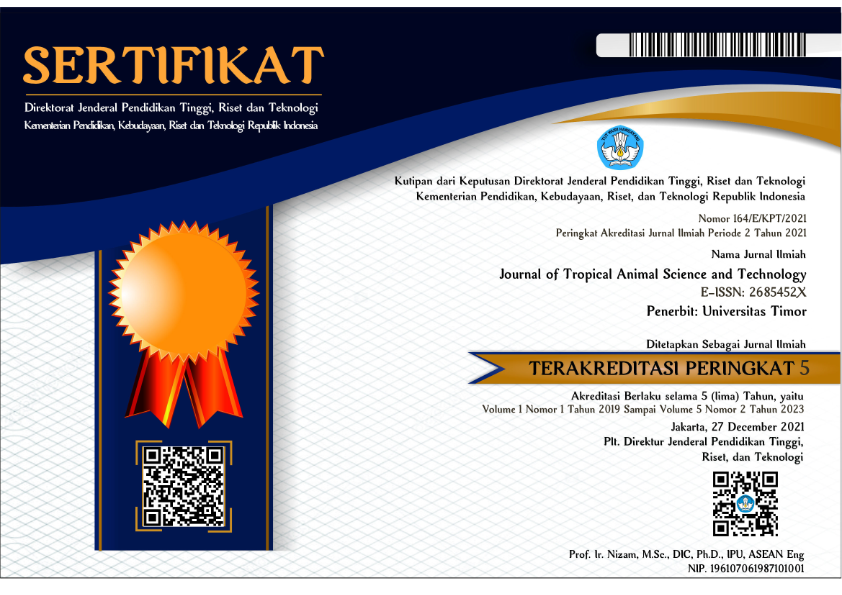ENERGY AND NITROGEN BALANCE OF MALE BALI CATTLE FATTENED BY GREEN FEED IN SMALLHOLDER FARMS
DOI:
https://doi.org/10.32938/jtast.v2i1.590Keywords:
Energy and Nitrogen Balance, male Bali cattle, Greenlot fatteningAbstract
The experiment was conducted for 3 months from March to June 2013 using nine (9) males Bali Cattle ages 2,5 - 3,5 or an average 3.0 years old based on teeth estimated with initial body weight range is 227-290 kg or an average of 257.40±23,60 kg in the Fattening Stalls, Bero Sembada Farmers Group, Laen Manen Sub District, Belu Regency, East Nusa Tenggara. This research be adapted to the practice of ranchers in fattened of cattle that includes management of feeding, housing, and health. Type of feed given during the study was Centrosema pubences, Clitoria ternatea, jerami Zea mays segar, Pennisetum purpuphoides, Leucaena leucocephala, natural grass, Pennisetum purpureum and Sesbania grandiflora. Variables measured consumption and digestibility energy and N, energy and N Balance, NNU and biological value. Data were analyzed with descriptive analysis procedures. The results showed that the kinetic energy (Mcal/kg/head/day) is the energy consumption of 30.657; energy feses, undigested and urine, respectively 10.136; 20.522 and 1.026, as well as energy Balance 19.496. Meanwhile, consumption of N is 169 000 g/head/day ; excretion of N feses, urine and N digested, respectively 50, 20 and 119, as well as Balance N 104 g/head/day. While net nitrogen utilization and biological value of nitrogen is 58.580% and 83.194%. Can be concluded that male Bali cattle finishing phase in fattening using a feed single forage the improve energy-nitrogen intake and digestibility, resulting a positive nitrogen Balance and energy, as well as net nitrogen utilization and biological value protein feed is high enough.























